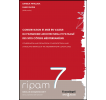Conservation et mise en valeur du patrimoine architectural et paysagé des sites cotiers méditerranéens
Synopsis
Released under the Creative Commons License Attribution-NonCommercial-NoDerivatives 4.0 International (CC BY-NC-ND 4.0) in the peer reviewed series Uomo, ambiente, sviluppo
Les RIPAM (Rencontres Internationles du Patrimoine Architectural Méditerranéen) sont à la fois des rencontres et un réseau de personnes et d’institutions qui travaillent pour la connaissance et à la conservation du patrimoine architectural et urbain méditerranéen: Meknès (Maroc) en 2005, Marrakech (Maroc) en 2007, Lisbonne (Portugal) en 2009, M’sila (Algérie) en 2012, Marseille (France) en 2013, Monastir (Tunisie) en 2015. La septième conférence RIPAM «Conservation et valorisation du patrimoine architectural et paysagé des sites côtiers méditerranéens / Conservation and promotion of architectural and landscape heritage of the Mediterranean coastal sites» a été organisée à Gênes le 20-22 septembre 2017 par le DAD (Département d’Architecture et Design, Université de Gênes) et le CNR-ICVBC (Institut de Conservation et de mise en valeur du Patrimoine Culturel du Conseil National des Recherches de Florence, maintenant CNR-Institut des Sciences du Patrimoine Culturel).
Ce livre contient les travaux de recherche menés depuis Ripam7 sur la conservation et la mise en valeur du patrimoine architectural et paysager des sites côtiers de la Méditerranée. Il part ensuite de la définition du paysage côtier et des transformations que le paysage luimême a souffert au fil du temps, dans la région méditerranéenne pour arriver ensuite aux spécificités du patrimoine architectural de ces mêmes régions. Différentes théories et approches méthodologiques sont comparées. La deuxième partie de l’ouvrage décrit les stratégies de conservation et de valorisation et présente des interventions dans différentes parties des côtes méditerranéennes (des côtes italiennes aux côtes françaises et portugaises, puis aux côtes marocaines, tunisiennes, algériennes, israéliennes, turques, grecques et syriennes).
The RIPAM (French acronym for International Meetings on Mediterranean Architectural Heritage) are both meetings and a network of people and institutions working to the knowledge and the conservation of the architectural and urban Mediterranean heritage: Meknes (Morocco) in 2005, Marrakech (Morocco) ) in 2007, Lisbon (Portugal) in 2009, M’sila (Algeria) in 2012, Marseille (France) in 2013, Monastir (Tunisia) in 2015. The seventh RIPAM conference “Conservation and enhancement of the architectural and landscaped heritage of coastal sites Mediterranean / Conservation and Promotion of Architectural and Landscape Heritage of the Mediterranean coastal sites” was organized in Genoa, 20-22 September 2017, by the DAD (Department of Architecture and Design, University of Genoa) and the CNR-ICVBC (Institute of Conservation and Promotion of Cultural Heritage of the National Research Council of Florence) now CNR-ISPC (Institute of Heritage Sciences) .
This book contains the research work done since Ripam7 on the conservation and promotion of the architectural and landscape heritage of Mediterranean coastal sites. It starts with the definition of coastal landscape and the transformations that the landscape itself has undergone, over time, in the Mediterranean area Then it addresses the specificities of the architectural heritage of these same areas. Different theories and methodological approaches are compared. In the second part of the book, conservation and promotion strategies are described with interventions carried out in different parts of the Mediterranean coasts (from the Italian coasts to the French and Portuguese coasts and then to the Moroccan, Tunisian, Algerian, Israeli, Turkish and Greek coasts till the Syrian territory).
Chapters
-
Parte I
-
Parte II
-
Parte III
-
Parte IV
Downloads


